Water is the stuff of life. Without water there is no life. When we send probes to distant planets the first thing on the search list is water. Here on planet earth fresh water resources are being stretched to the limit. Deserts are expanding, under ground aquifers are becoming seriously depleted and droughts are becoming more and more pronounced. Agriculture in a significant part of the world is threatened. As a result the spectre of war and wide spread famine in the not to distant future is very real. What if there a technology that could increase our water resources? It just so happens that there is at least one technical solution out there. This is a reprint of an article in Scientific America ……….
ISRAEL PROVES THE DESALINATION ERA IS HERE
One of the driest countries on Earth now makes more freshwater than it needs
By Rowan Jacobsen, Ensia on July 29, 2016
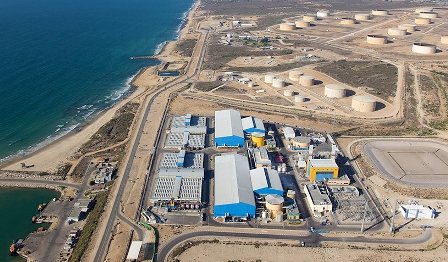
Askelon Desalination Plant in Israel
July 19, 2016 — Ten miles south of Tel Aviv, I stand on a catwalk over two concrete reservoirs the size of football fields and watch water pour into them from a massive pipe emerging from the sand. The pipe is so large I could walk through it standing upright, were it not full of Mediterranean seawater pumped from an intake a mile offshore.
“Now, that’s a pump!” Edo Bar-Zeev shouts to me over the din of the motors, grinning with undisguised awe at the scene before us. The reservoirs beneath us contain several feet of sand through which the seawater filters before making its way to a vast metal hangar, where it is transformed into enough drinking water to supply 1.5 million people.
We are standing above the new Sorek desalination plant, the largest reverse-osmosis desal facility in the world, and we are staring at Israel’s salvation. Just a few years ago, in the depths of its worst drought in at least 900 years, Israel was running out of water. Now it has a surplus. That remarkable turnaround was accomplished through national campaigns to conserve and re-use Israel’s meagre water resources, but the biggest impact came from a new wave of desalination plants.
Bar-Zeev, who recently joined Israel’s Zuckerberg Institute for Water Research after completing his post-doc work at Yale University, is an expert on biofouling, which has always been an Achilles’ heel of desalination and one of the reasons it has been considered a last resort. Desal works by pushing saltwater into membranes containing microscopic pores. The water gets through, while the larger salt molecules are left behind. But microorganisms in seawater quickly colonize the membranes and block the pores, and controlling them requires periodic costly and chemical-intensive cleaning. But Bar-Zeev and colleagues developed a chemical free system using porous lava stone to capture the microorganisms before they reach the membranes. It’s just one of many breakthroughs in membrane technology that have made desalination much more efficient. Israel now gets 55 percent of its domestic water from desalination, and that has helped to turn one of the world’s driest countries into the unlikeliest of water giants.
Driven by necessity, Israel is learning to squeeze more out of a drop of water than any country on Earth, and much of that learning is happening at the Zuckerberg Institute, where researchers have pioneered new techniques in drip irrigation, water treatment and desalination. They have developed resilient well systems for African villages and biological digesters than can halve the water usage of most homes.
The institute’s original mission was to improve life in Israel’s bone-dry Negev Desert, but the lessons look increasingly applicable to the entire Fertile Crescent. “The Middle East is drying up,” says Osnat Gillor, a professor at the Zuckerberg Institute who studies the use of recycled wastewater on crops. “The only country that isn’t suffering acute water stress is Israel.”
That water stress has been a major factor in the turmoil tearing apart the Middle East, but Bar-Zeev believes that Israel’s solutions can help its parched neighbors, too — and in the process, bring together old enemies in common cause.
Bar-Zeev acknowledges that water will likely be a source of conflict in the Middle East in the future. “But I believe water can be a bridge, through joint ventures,” he says. “And one of those ventures is desalination.
Driven to Desperation
In 2008, Israel teetered on the edge of catastrophe. A decade-long drought had scorched the Fertile Crescent, and Israel’s largest source of freshwater, the Sea of Galilee, had dropped to within inches of the “black line” at which irreversible salt infiltration would flood the lake and ruin it forever. Water restrictions were imposed, and many farmers lost a year’s crops
Their counterparts in Syria fared much worse. As the drought intensified and the water table plunged, Syria’s farmers chased it, drilling wells 100, 200, then 500 meters (300, 700, then 1,600 feet) down in a literal race to the bottom. Eventually, the wells ran dry and Syria’s farmland collapsed in an epic dust storm. More than a million farmers joined massive shantytowns on the outskirts of Aleppo, Homs, Damascus and other cities in a futile attempt to find work and purpose.
And that, according to the authors of “Climate Change in the Fertile Crescent and Implications of the Recent Syrian Drought,” a 2015 paper in the Proceedings of the National Academy of Sciences, was the tinder that burned Syria to the ground. “The rapidly growing urban peripheries of Syria,” they wrote, “marked by illegal settlements, overcrowding, poor infrastructure, unemployment, and crime, were neglected by the Assad government and became the heart of the developing unrest.”
Similar stories are playing out across the Middle East, where drought and agricultural collapse have produced a lost generation with no prospects and simmering resentments. Iran, Iraq and Jordan all face water catastrophes. Water is driving the entire region to desperate acts.
More Water Than Needs
Except Israel. Amazingly, Israel has more water than it needs. The turnaround started in 2007, when low-flow toilets and showerheads were installed nationwide and the national water authority built innovative water treatment systems that recapture 86 percent of the water that goes down the drain and use it for irrigation — vastly more than the second-most-efficient country in the world, Spain, which recycles 19 percent.
But even with those measures, Israel still needed about 1.9 billion cubic meters (2.5 billion cubic yards) of freshwater per year and was getting just 1.4 billion cubic meters (1.8 billion cubic yards) from natural sources. That 500-million-cubic-meter (650-million-cubic-yard) shortfall was why the Sea of Galilee was draining like an unplugged tub and why the country was about to lose its farms.
Enter desalination. The Ashkelon plant, in 2005, provided 127 million cubic meters (166 million cubic yards) of water. Hadera, in 2009, put out another 140 million cubic meters (183 million cubic yards). And now Sorek, 150 million cubic meters (196 million cubic yards). All told, desal plants can provide some 600 million cubic meters (785 million cubic yards) of water a year, and more are on the way.
The Sea of Galilee is fuller. Israel’s farms are thriving. And the country faces a previously unfathomable question: What to do with its extra water?
Water Diplomacy
Inside Sorek, 50,000 membranes enclosed in vertical white cylinders, each 4 feet high and 16 inches wide, are whirring like jet engines. The whole thing feels like a throbbing spaceship about to blast off. The cylinders contain sheets of plastic membranes wrapped around a central pipe, and the membranes are stippled with pores less than a hundredth the diameter of a human hair. Water shoots into the cylinders at a pressure of 70 atmospheres and is pushed through the membranes, while the remaining brine is returned to the sea.
Desalination used to be an expensive energy hog, but the kind of advanced technologies being employed at Sorek have been a game changer. Water produced by desalination costs just a third of what it did in the 1990s. Sorek can produce a thousand liters of drinking water for 58 cents. Israeli households pay about US$30 a month for their water — similar to households in most U.S. cities, and far less than Las Vegas (US$47) or Los Angeles (US$58).
The International Desalination Association claims that 300 million people get water from desalination, and that number is quickly rising. IDE, the Israeli company that built Ashkelon, Hadera and Sorek, recently finished the Carlsbad desalination plant in Southern California, a close cousin of its Israel plants, and it has many more in the works. Worldwide, the equivalent of six additional Sorek plants are coming online every year. The desalination era is here.
What excites Bar-Zeev the most is the opportunity for water diplomacy. Israel supplies the West Bank with water, as required by the 1995 Oslo II Accords, but the Palestinians still receive far less than they need. Water has been entangled with other negotiations in the ill-fated peace process, but now that more is at hand, many observers see the opportunity to depoliticize it. Bar-Zeev has ambitious plans for a Water Knows No Boundaries conference in 2018, which will bring together water scientists from Egypt, Turkey, Jordan, Israel, the West Bank and Gaza for a meeting of the minds.
Even more ambitious is the US$900 million Red Sea-Dead Sea Canal, a joint venture between Israel and Jordan to build a large desalination plant on the Red Sea, where they share a border, and divide the water among Israelis, Jordanians and the Palestinians. The brine discharge from the plant will be piped 100 miles north through Jordan to replenish the Dead Sea, which has been dropping a meter per year since the two countries began diverting the only river that feeds it in the 1960s. By 2020, these old foes will be drinking from the same tap.
On the far end of the Sorek plant, Bar-Zeev and I get to share a tap as well. Branching off from the main line where the Sorek water enters the Israeli grid is a simple spigot, a paper cup dispenser beside it. I open the tap and drink cup after cup of what was the Mediterranean Sea 40 minutes ago. It tastes cold, clear and miraculous.
The contrasts couldn’t be starker. A few miles from here, water disappeared and civilization crumbled. Here, a galvanized civilization created water from nothingness. As Bar-Zeev and I drink deep, and the climate sizzles, I wonder which of these stories will be the exception, and which the rule.
@@@@@@@@@@@@@@
Here is a re-print of another article
AIDED BY THE SEA, ISRAEL OVERCOMES AN OLD FOE: DROUGHT
editor Wednesday 3 June 2015
From:
By Isabel Kershner.. JERUSALEM — At the peak of the drought, Shabi Zvieli, an Israeli gardener, feared for his livelihood. A hefty tax was placed on excessive household water consumption, penalizing families with lawns, swimming pools or leaky pipes. So many of Mr. Zvieli’s clients went over to synthetic grass and swapped their seasonal blooms for hardy, indigenous plants more suited to a semiarid climate. “I worried about where gardening was going,” said Mr. Zvieli, 56, who has tended people’s yards for about 25 years.
Across the country, Israelis were told to cut their shower time by two minutes. Washing cars with hoses was outlawed and those few wealthy enough to absorb the cost of maintaining a lawn were permitted to water it only at night.
“We were in a situation where we were very, very close to someone opening a tap somewhere in the country and no water would come out,” said Uri Schor, the spokesman and public education director of the government’s Water Authority.
But that was about six years ago. Today, there is plenty of water in Israel. A lighter version of an old “Israel is drying up” campaign has been dusted off to advertise baby diapers. “The fear has gone,” said Mr. Zvieli, whose customers have gone back to planting flowers.
As California and other western areas of the United States grapple with an extreme drought, a revolution has taken place here. A major national effort to desalinate Mediterranean seawater and to recycle wastewater has provided the country with enough water for all its needs, even during severe droughts. More than 50 percent of the water for Israeli households, agriculture and industry is now artificially produced.
During the drought years, farmers at Ramat Rachel, a kibbutz on the southern outskirts of Jerusalem, took water-economizing measures like uprooting old apple orchards a few years before their time. With the new plenty, water allocations for Israeli farmers that had been slashed have been raised again, though the price has also gone up.

Israeli desalination plants
“Now there is no problem of water,” said Shaul Ben-Dov, an agronomist at Ramat Rachel. “The price is higher, but we can live a normal life in a country that is half desert.”
With its part-Mediterranean, part-desert climate, Israel had suffered from chronic shortages and exploitation of its natural water resources for decades.
The natural fresh water at Israel’s disposal in an average year does not cover its total use of roughly 525 billion gallons. The demand for potable water is projected to rise to 515 billion gallons by 2030, from 317 billion gallons this year.
The turnaround came with a seven-year drought, one of the most severe to hit modern Israel, that began in 2005 and peaked in the winter of 2008 to 2009. The country’s main natural water sources — the Sea of Galilee in the north and the mountain and coastal aquifers — were severely depleted, threatening a potentially irreversible deterioration of the water quality.
Measures to increase the supply and reduce the demand were accelerated, overseen by the Water Authority, a powerful interministerial agency established in 2007.
Desalination emerged as one focus of the government’s efforts, with four major plants going into operation over the past decade. A fifth one should be ready to operate within months. Together, they will produce a total of more than 130 billion gallons of potable water a year, with a goal of 200 billion gallons by 2020.
Israel has, in the meantime, become the world leader in recycling and reusing wastewater for agriculture. It treats 86 percent of its domestic wastewater and recycles it for agricultural use — about 55 percent of the total water used for agriculture. Spain is second to Israel, recycling 17 percent of its effluent, while the United States recycles just 1 percent, according to Water Authority data.
Before the establishment of the Water Authority, various ministries were responsible for different aspects of the water issue, each with its own interests and lobbies.
“There was a lot of hydro-politics,” said Eli Feinerman of the faculty of agriculture, food and environment at the Hebrew University of Jerusalem, who served for years as a public representative on the authority’s council. “The right hand did not know what the left was doing.”
The Israeli government began by making huge cuts in the annual water quotas for farmers, ending decades of extravagant overuse of heavily subsidized water for agriculture.
The tax for surplus household use was dropped at the end of 2009 and a two-tiered tariff system was introduced. Regular household water use is now subsidized by a slightly higher rate paid by those who consume more than the basic allotment.
Water Authority representatives went house to house offering to fit free devices on shower heads and taps that inject air into the water stream, saving about a third of the water used while still giving the impression of a strong flow.
Officials say that wiser use of water has led to a reduction in household consumption of up to 18 percent in recent years.
And instead of the municipal authorities being responsible for the maintenance of city pipe networks, local corporations have been formed. The money collected for water is reinvested in the infrastructure.
Mekorot, the national water company, built the national water carrier 50 years ago, a system for transporting water from the Sea of Galilee in the north through the heavily populated center to the arid south. Now it is building new infrastructure to carry water west to east, from the Mediterranean coast inland.
In the parched Middle East, water also has strategic implications. Struggles between Israel and its Arab neighbors over water rights in the Jordan River basin contributed to tensions leading to the 1967 Middle East war.
Israel, which shares the mountain aquifer with the West Bank, says it provides the Palestinians with more water than it is obliged to under the existing peace accords. The Palestinians say it is not enough and too expensive. A new era of water generosity could help foster relations with the Palestinians and with Jordan.
The Sorek desalination plant rises out of the sandy ground about nine miles south of Tel Aviv. Said to be the largest plant of its type in the world, it produces 40 billion gallons of potable water a year, enough for about a sixth of Israel’s roughly eight million citizens.
Miriam Faigon, the director of the solutions department at IDE Technologies, the Israeli company that built three of the plants along the Mediterranean, said that the company had cut energy levels and costs with new technologies and a variety of practical methods.
Under a complex arrangement, the plants will be transferred to state ownership after 25 years. For now, the state buys Sorek’s desalinated water for a relatively cheap 58 cents a cubic meter — more than free rainwater, Ms. Faigon acknowledged, “but that’s only if you have it.”
Israeli environmentalists say the rush to desalination has partly come at the expense of alternatives like treating natural water reserves that have become polluted by industry, particularly the military industries in the coastal plain.
“We definitely felt that Israel did need to move toward desalination,” said Sarit Caspi-Oron, a water expert at the non-government Israel Union for Environmental Defense. “But it is a question of how much, and of priorities. Our first priority was conservation and treating and reclaiming our water sources.”
Some environmentalists also say that the open-ocean intake method used by Israel’s desalination plants, in line with local regulations, as opposed to subsurface intakes, has a potentially destructive effect on sea life, sucking in billions of fish eggs and larvae.
But Boaz Mayzel, a marine biologist at the Israel Union for Environmental Defense, said that the effects were not yet known and would have to be checked over time.
Some Israelis are cynical about the water revolution. Tsur Shezaf, an Israeli journalist and the owner of a farm that produces wine and olives in the southern Negev, argues that desalination is essentially a privatization of Israel’s water supply that benefits a few tycoons, while recycling for agriculture allows the state to sell the same water twice.
Mr. Shezaf plants his vines in a way that maximizes the use of natural floodwaters in the area, as in ancient times, and irrigates the rest of the year with a mix of desalinated water and fresh water. He prefers to avoid the cheaper recycled water, he says, because, “You don’t know exactly what you are getting.”
But experts say that the wastewater from Israel’s densely populated Tel Aviv area is treated to such a high level that no harm would come to anyone who accidentally drank it.
@@@@@@@@@@@@@@
So that’s one solution to the problem. Waiting in the wings, admittedly a long way off centre stage, is the prospect of unlimited freshwater as a by-product of Thorium based Nuclear Reactors. When fully developed these radio-active waste neutral (in fact they will burn radio-active waste) plants will produce almost unlimited energy with fresh water as a by product. See, its not all gloom and doom. See the my past blog entry on the subject of Thorium based reactors
@@@@@@@@@@@@@@

















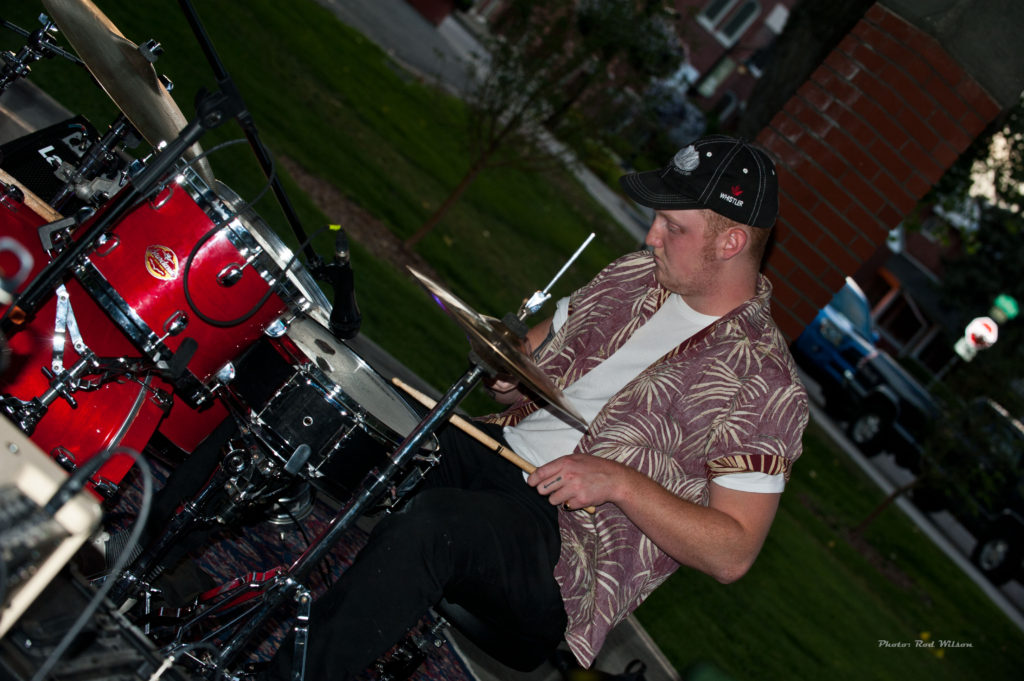
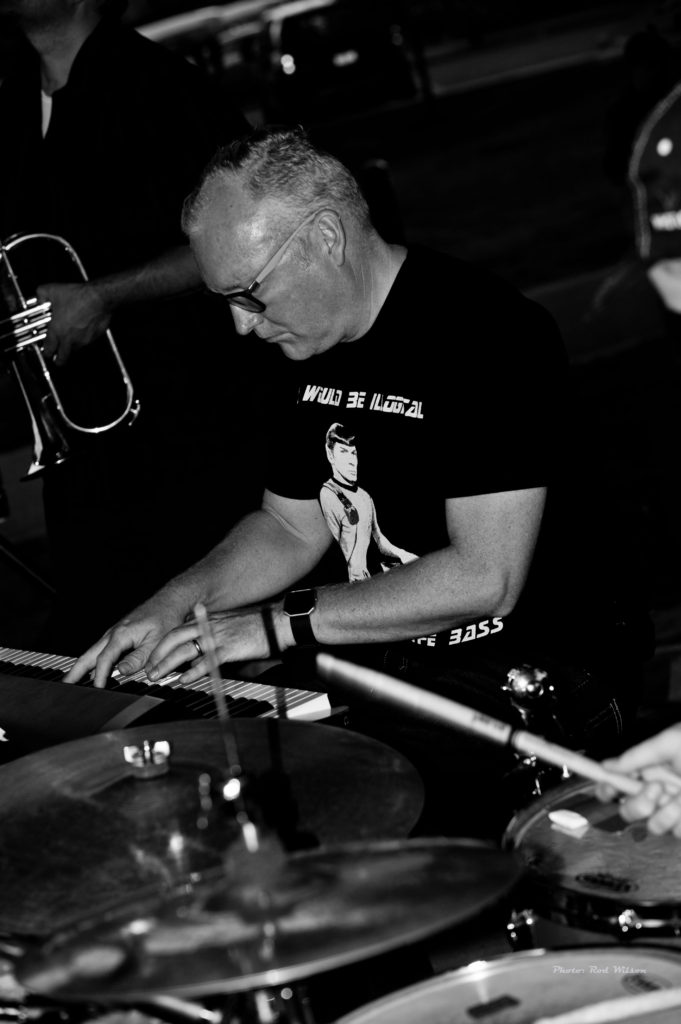


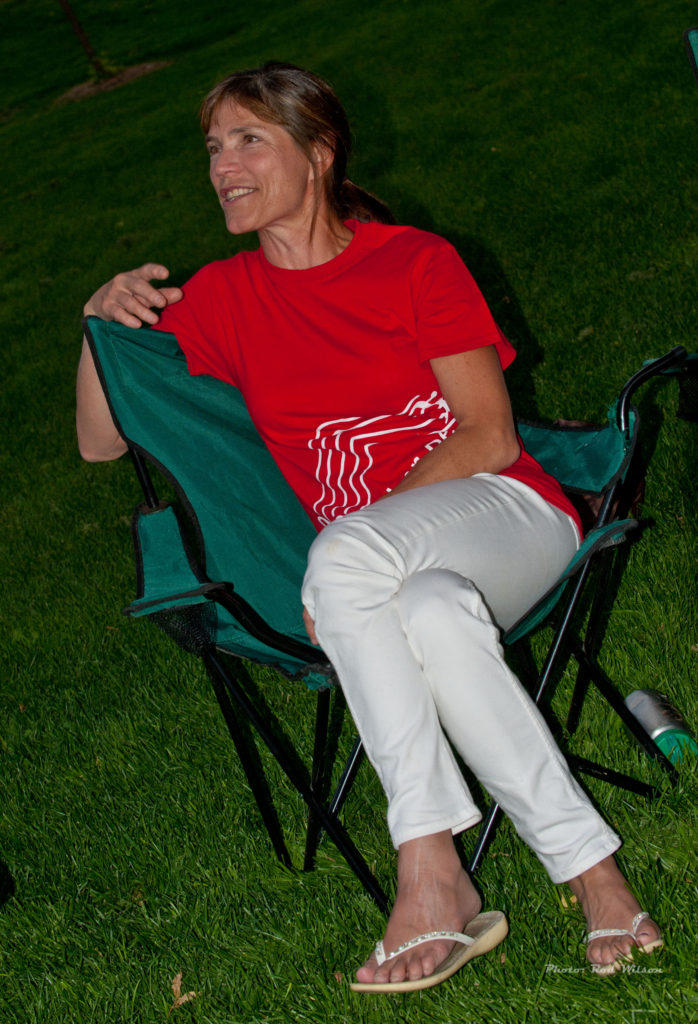
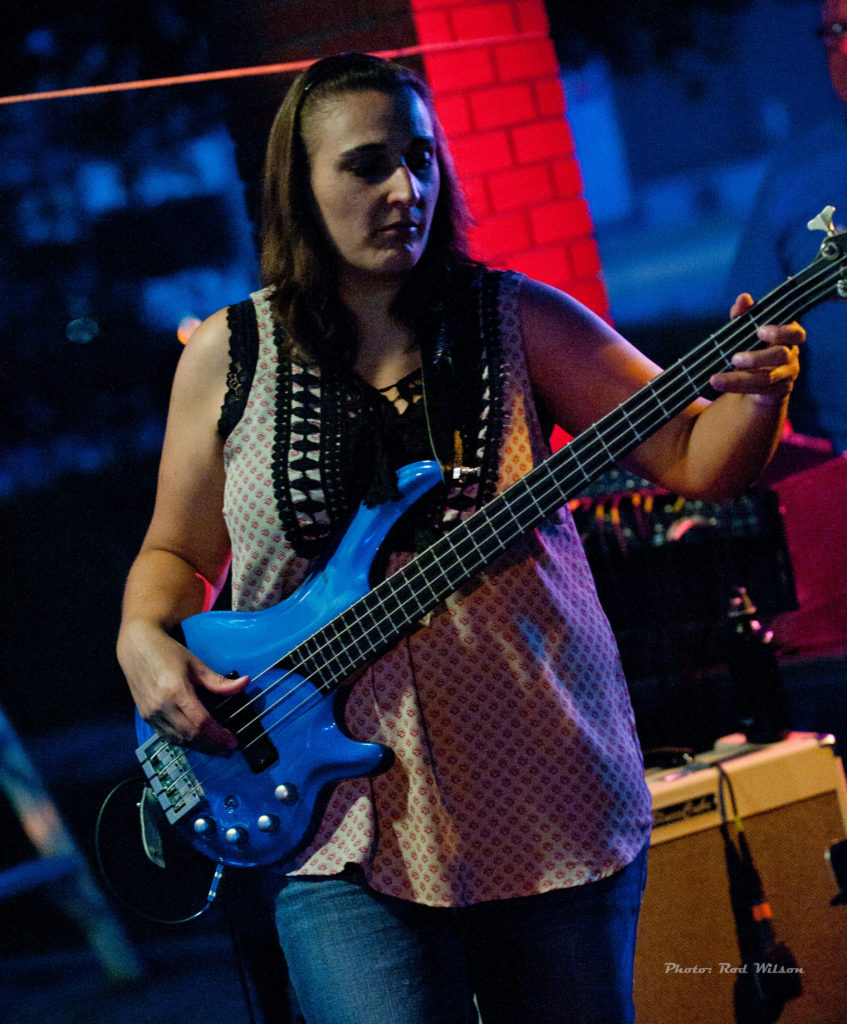



















 instrumental music they did throw in a few vocals. Aurora did a fine job on the classic highland ballad Wild Mountain Thyme (Will you go Lassie go), and Scarborough Fair. Jeff lead the audience in a soulful version of There is more Love Somewhere. What was missing from the evening was Jeff’s version of the classic Maritime song Song of the Mira ……. maybe next time. There was TV Music – The Theme from Dr Who; film music – The Curse of the Black Crow from Pirates of the Caribbean and a rip roaring version of Amy Cann’s the Catharsis Reel. Aurora and Jeff are very much front and centre in the music but they would not be as successful as they are with out Rob Fahie providing the solid bass parts and the outstanding drumming of Ben Johnson. I have a personal dislike of drummers performing in Celtic bands. I feel they are trying too hard to tap into the pop culture ethos and as a result the music suffers. Drummers always have a tendency to play way too loud without any sensitivity or thought to musical dynamics. Ben is not like that. He is more like a percussionist searching for the right textures to enhance the music. Way to go Ben!. The band finished the evening with an encore version of The Ashokan Farewell from the Ken Burns PBS documentary on the American Civil War. For some unknown reason the light during the performances was a little “dodgy” never-the-less here are some more images from the evening.
instrumental music they did throw in a few vocals. Aurora did a fine job on the classic highland ballad Wild Mountain Thyme (Will you go Lassie go), and Scarborough Fair. Jeff lead the audience in a soulful version of There is more Love Somewhere. What was missing from the evening was Jeff’s version of the classic Maritime song Song of the Mira ……. maybe next time. There was TV Music – The Theme from Dr Who; film music – The Curse of the Black Crow from Pirates of the Caribbean and a rip roaring version of Amy Cann’s the Catharsis Reel. Aurora and Jeff are very much front and centre in the music but they would not be as successful as they are with out Rob Fahie providing the solid bass parts and the outstanding drumming of Ben Johnson. I have a personal dislike of drummers performing in Celtic bands. I feel they are trying too hard to tap into the pop culture ethos and as a result the music suffers. Drummers always have a tendency to play way too loud without any sensitivity or thought to musical dynamics. Ben is not like that. He is more like a percussionist searching for the right textures to enhance the music. Way to go Ben!. The band finished the evening with an encore version of The Ashokan Farewell from the Ken Burns PBS documentary on the American Civil War. For some unknown reason the light during the performances was a little “dodgy” never-the-less here are some more images from the evening.











 For most people the idea of Classical Music usually means symphony orchestras, opulent concert halls, musicians in formal attire and patrons dressed to impress. It doesn’t necessarily follow that the symphony is the be all and and end all of classical music. The great virtuoso violinist Yehudi Menuhin, no stranger to large orchestras and concert halls, is reputed to have expressed the notion “that the true essence and application of music is to be found in chamber music”. If there is any doubt to that concept one has only to spend time with The Selkirk Trio. A couple of hours with Sue Gould (piano), Nicola Everton (clarinet) and Jeff Faragher (Cello) and you should become a true believer in chamber music. Over the years I have attended at least three concerts of the trio and each time I am impressed with their program selection, their technical virtuosity and their musicality. The strength of the trio, and chamber music in general, is the lack of filters. There is no sound re-enforcement to get in the way and distort the true sound of the instruments. The musical arena for chamber concerts tends to be human scale with the audience and the musicians all within hand reach of each other. The nuances of musical dynamics and shading are right there in and around the audience. The trio kicked off the concert with the Cuban classical composer and jazz musician Paquito D’Rivera’s Afro. Jeff doubled on Djembe to provide some authentic
For most people the idea of Classical Music usually means symphony orchestras, opulent concert halls, musicians in formal attire and patrons dressed to impress. It doesn’t necessarily follow that the symphony is the be all and and end all of classical music. The great virtuoso violinist Yehudi Menuhin, no stranger to large orchestras and concert halls, is reputed to have expressed the notion “that the true essence and application of music is to be found in chamber music”. If there is any doubt to that concept one has only to spend time with The Selkirk Trio. A couple of hours with Sue Gould (piano), Nicola Everton (clarinet) and Jeff Faragher (Cello) and you should become a true believer in chamber music. Over the years I have attended at least three concerts of the trio and each time I am impressed with their program selection, their technical virtuosity and their musicality. The strength of the trio, and chamber music in general, is the lack of filters. There is no sound re-enforcement to get in the way and distort the true sound of the instruments. The musical arena for chamber concerts tends to be human scale with the audience and the musicians all within hand reach of each other. The nuances of musical dynamics and shading are right there in and around the audience. The trio kicked off the concert with the Cuban classical composer and jazz musician Paquito D’Rivera’s Afro. Jeff doubled on Djembe to provide some authentic  atmosphere. This was followed by Ludwig Van Beethoven’s Trio in B Flat Major, Opus 11, the second movement. My favorite item in the trio’s program is the 7 Balkan Dances by the Croatian composer Marko Tajčević. Nicola obviously revels in these short but intricate pieces that bounce around the essentially odd rhythmic elements of Balkan music. I have tried to find a recording of these particular pieces but so far I have not been successful. I only think it fair to suggest that the trio needs to record them at some future date.
atmosphere. This was followed by Ludwig Van Beethoven’s Trio in B Flat Major, Opus 11, the second movement. My favorite item in the trio’s program is the 7 Balkan Dances by the Croatian composer Marko Tajčević. Nicola obviously revels in these short but intricate pieces that bounce around the essentially odd rhythmic elements of Balkan music. I have tried to find a recording of these particular pieces but so far I have not been successful. I only think it fair to suggest that the trio needs to record them at some future date.




























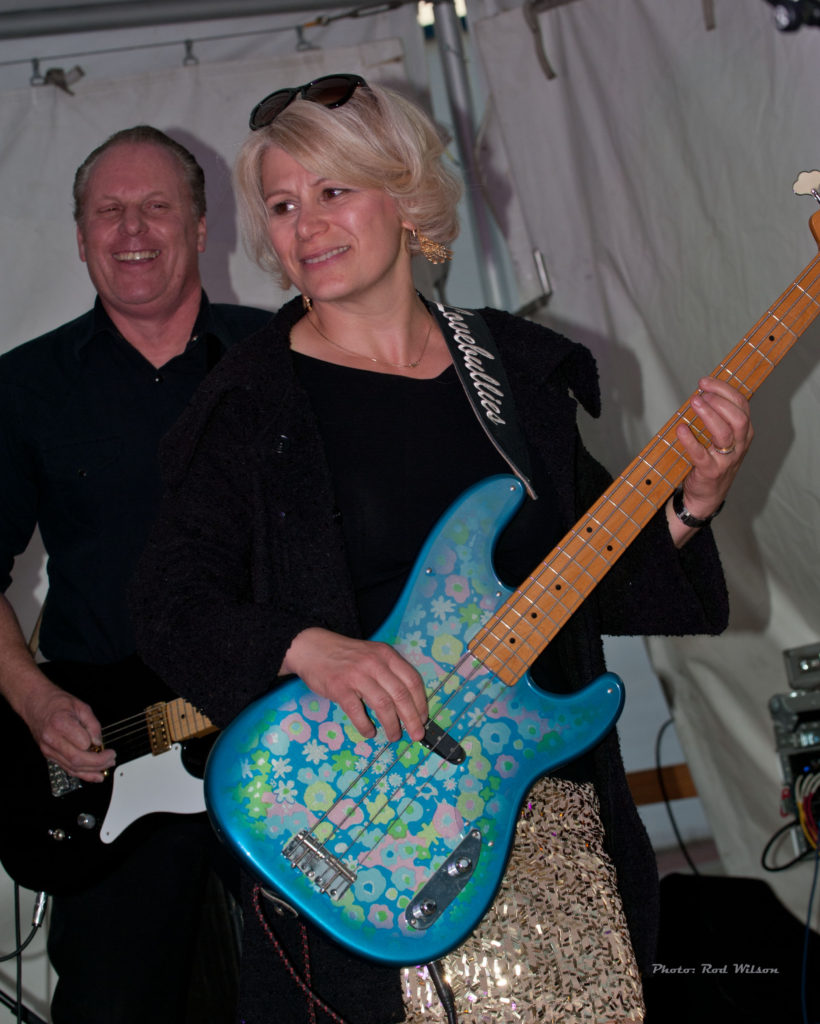













































 lady is virtually re-inventing the guitar. She plays a wide range of interesting classical guitars that include, double course instruments, high strung
lady is virtually re-inventing the guitar. She plays a wide range of interesting classical guitars that include, double course instruments, high strung  instruments, instruments with scalloped finger boards (a’ la John McLaughlin), guitars with odd shapes and styles. This lady is absolutely brilliant. I have yet to hear another classical guitarist that is more spell binding in performance. Check the YouTube selections below. I find her technique and musicality absolutely astounding
instruments, instruments with scalloped finger boards (a’ la John McLaughlin), guitars with odd shapes and styles. This lady is absolutely brilliant. I have yet to hear another classical guitarist that is more spell binding in performance. Check the YouTube selections below. I find her technique and musicality absolutely astounding
